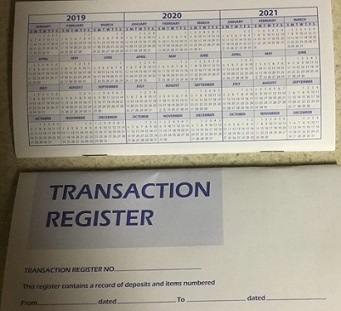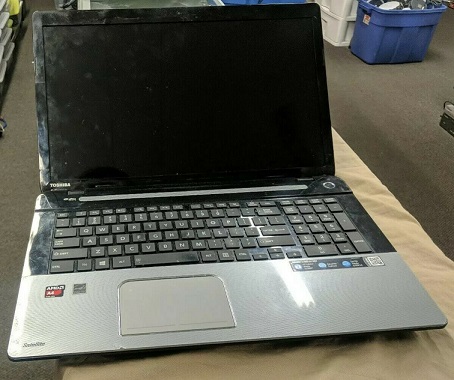The concept of a financial reserve will make or break your actual savings and financial goals. When
you save money, it is set aside from your current spending. This savings could
reside as cash or in your checking or savings accounts. However, what is this
money’s exact purpose? If it does not have a very specific assignment, then any
financial need or desire may consume it: a medical bill, car repair, attending
an out-of-town wedding, replacing worn-out shoes, or used for being a tech ‘early
adopter.’ Then, poof your savings are
gone. So when a large expense comes along without savings assigned to cover it,
the money to pay for that must be borrowed money. And borrowed money with
interest charges turns you around in the wrong financial direction. There is
one way to make sure this does not happen – it is to employ the concept of
reserves.
A financial reserve refers to an assignment of money to
serve a specific purpose. Simply living life requires many expenses, and many
of these are known in advance and can be roughly estimated for both price and
timing. For example, if you are currently driving a vehicle then it is a
certainty that, sooner or later, it will require:
- Maintenance (oil & fluids changed, new tires,
spark plugs, battery, brakes, wax and detail, etc.)
- Repairs (failed water pump, new muffler, or minor
damage from a parking lot incident)
- Replacement (once your current car is no longer
viable or serves your needs)
These three types of expenses are known in advance and
can be estimated. We know today that we must pay for these expenditures, sooner
or later. The way to prepare is to assign some of your ongoing additions to savings
to: vehicle maintenance, vehicle repairs, and vehicle replacement. So when the
brake light appears on your dashboard then you will have the money waiting on
standby to pay for new brakes without going into debt or financial struggle.
The rate of adding money to these vehicle reserves should be estimates based
upon the age, type of vehicle, mileage, etc. For example, a brand new car will
need no maintenance for a few years while a 15-year-old car will need a lot of
repairs as parts fail.
If you fail to have savings assigned to vehicle
replacement, what happens when your car dies? You make the financial mistake of
a car lease or loan, making you poorer from interest charges. An accounting supervisor
I spoke with did not understand this and was SO happy that she was just 3
months away from finishing off the car payments on her car loan. As kindly as I
could, I pointed out, “You still have the vehicle expense for your next car. As
long as you are using a car, your vehicle assets are depreciating and you have
to replace that depreciation in an ongoing manner.” Sadly, she replied, “That is
just for rich people, I can’t afford that.” I later learned that most of her
family and relatives go from car loan to car loan, or car lease to car lease. Over
their lifetime, they are transferring a huge amount of money to lenders, money
that they could really use. And this extra expense is unnecessary: if only they
would delay buying their next car until they could afford it from their car
replacement reserve. If they could do this just
once, and get ahead of their expense, then it would save them the remainder
of their lifetime in car payment interest and extra lease fees. With one car
replacement with cash, you can break the loan-to-loan cycle. This way, you will
buy your subsequent car from building up your vehicle reserve and earning interest each month instead of paying that interest to a lender.
What are some other expenses, known in advance, that
should have a reserve and a place in your budget? You may include medical
bills, apparel, vacations, holiday gifts, home repairs, appliance replacements,
emergency fund (for losing your job), and the big one: retirement. When you financially
map out all of these potential expenses for the first time, it can be a
shocking amount of money. True, but it is also the financial REALITY of your
current lifestyle. You are viewing your financial life, in numbers, perhaps for
the first time. These expenses can either be funded with savings up front or with debt
after the fact. Which option do you think is best for your financial future?
If you do not have reserves for those categories, when these expenses arise
they will drain your “savings” to zero, and beyond.
More importantly, if you fail to reserve money for known
expenses and your savings is constantly under pressure, then you will likely
never have a meaningful amount of investments to fund your future. Having little
or no investments will eventually translate into no retirement for you, or a
retirement of financial struggle. My net worth did not start making notable advances
that were sustained until I began fully
reserving money for all of these known and common expenses. Use paper, a
spreadsheet, or any manner to list out all your physical possessions and then estimate
how much money is required for normal maintenance, repairs, and eventual
replacement. For a simple example, if you’ll need to replace your lawn tractor
in around 3 years, find the model you will want (and we’re estimating it may be
$2,000) and divide that by 36 ( $2,000/36 months= $55), and you’ve calculated
how much money you need to set aside in a reserve to replace your lawn tractor
in 3 years. Your reserve list will have both dates and amounts for each item to
replace, along with an estimate of annual maintenance and repairs until then.
If you want to protect your savings from life’s expenses,
and thereby avoid unnecessary interest charges, then you must have allocated
financial reserves. Setting up and maintaining these reserves needs to be
involved in any budgeting or financial planning that you perform. There can be
notable problems when you do not have specific reserves, in retirement for
example. I know someone who retired with an imminent need to replace his dilapidated
roof and one of his two cars – but his financial planner failed to point this
out (and he didn’t ask me). So within one
year of retiring, he was forced to go back and get part-time work, at a
lower wage, to make payments for some of these obvious expenses where he had no
reserve to cover them. It is my best advice that you begin to fund specific
reserves for your lifestyle and refrain from spending that reserve on anything
else.










